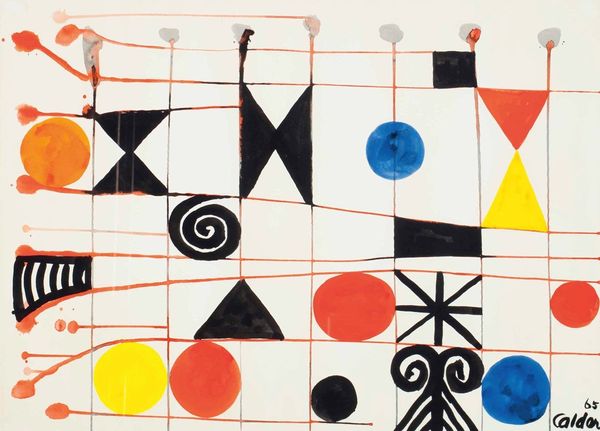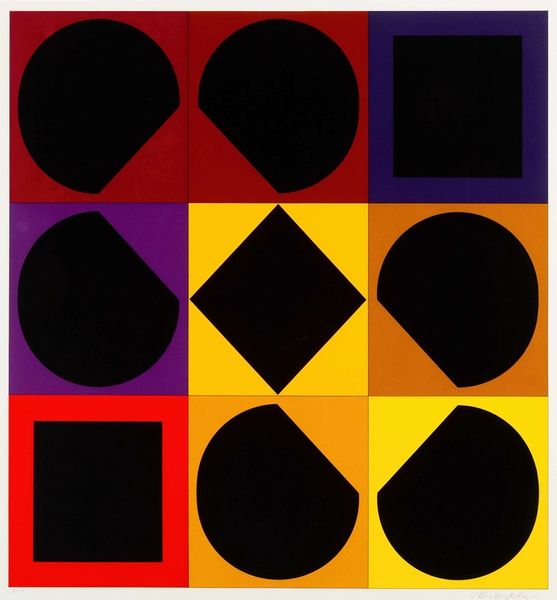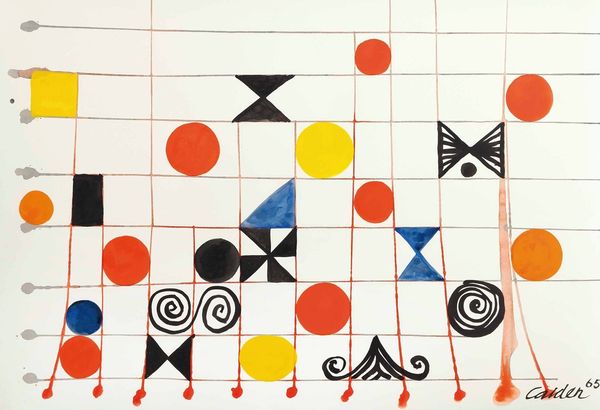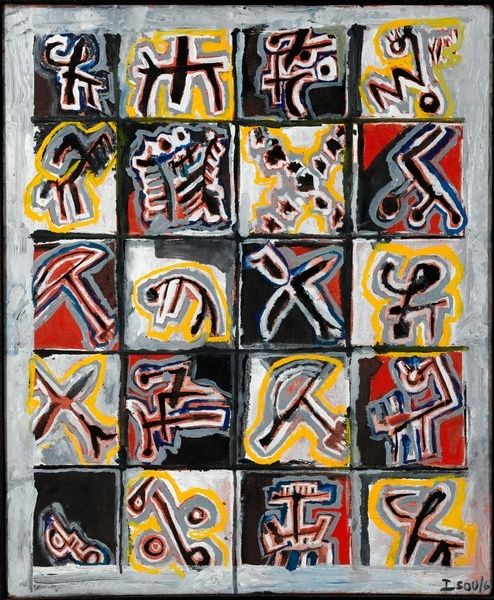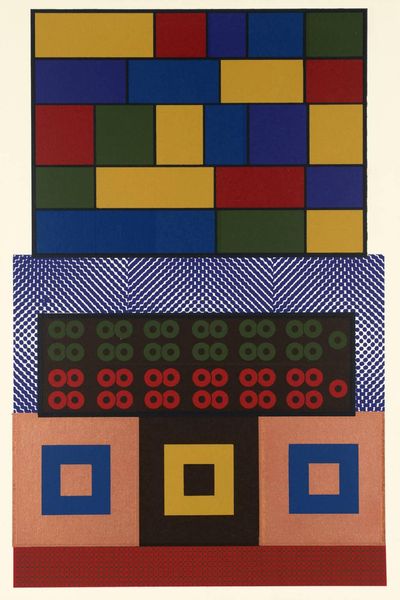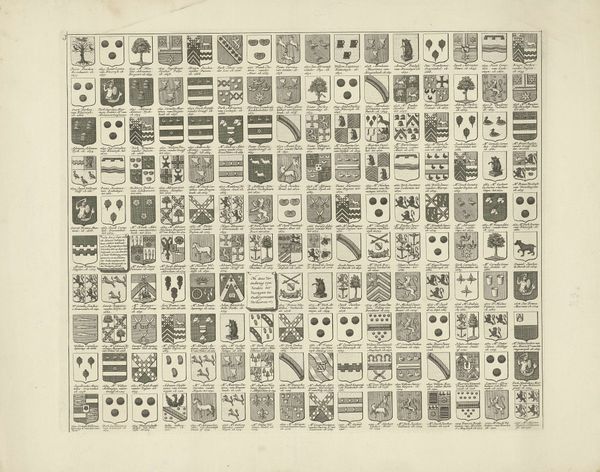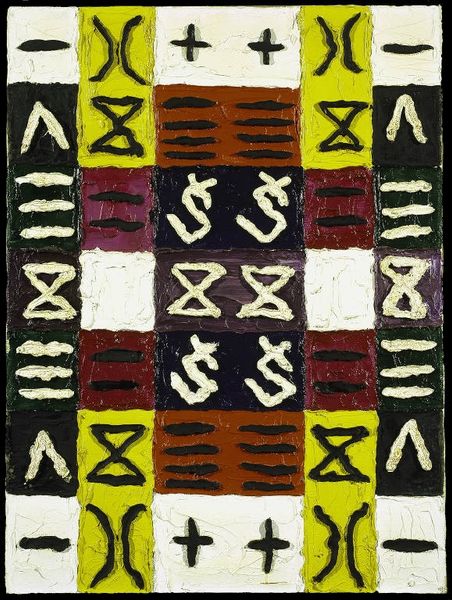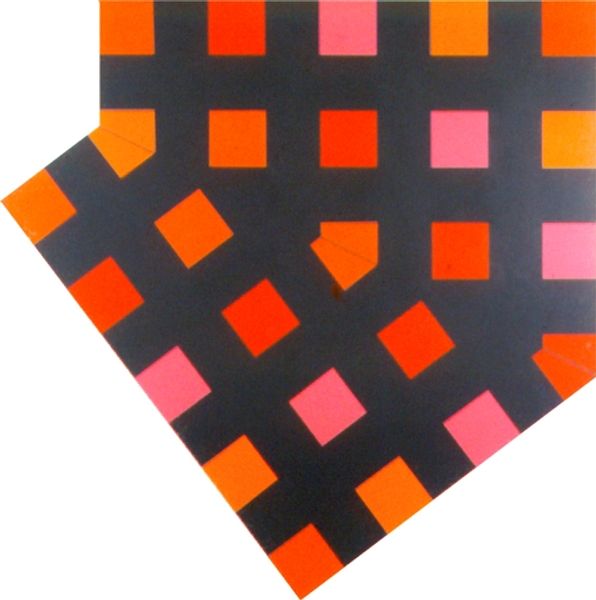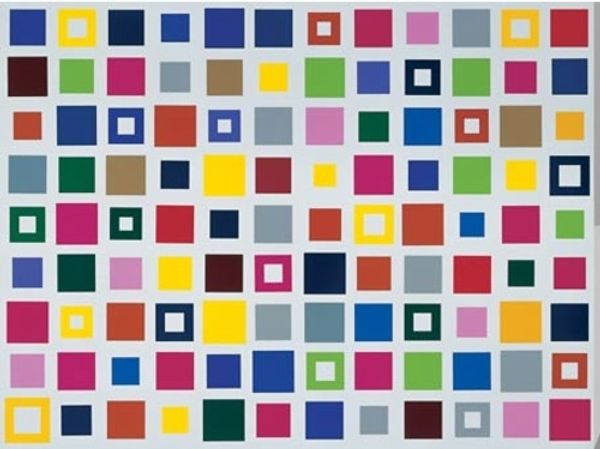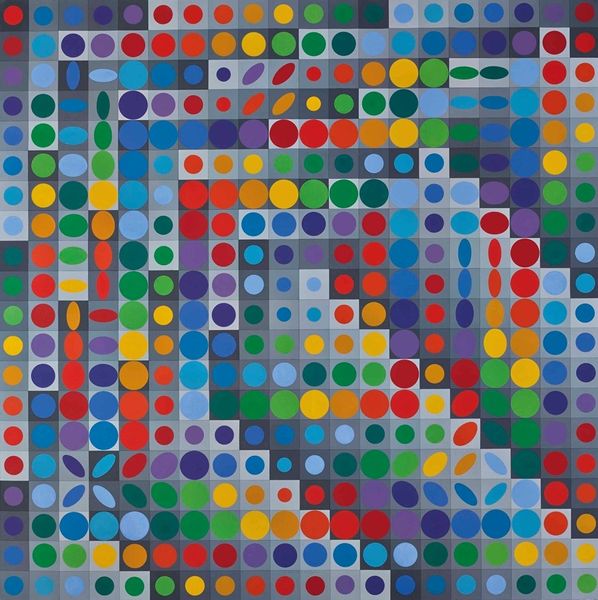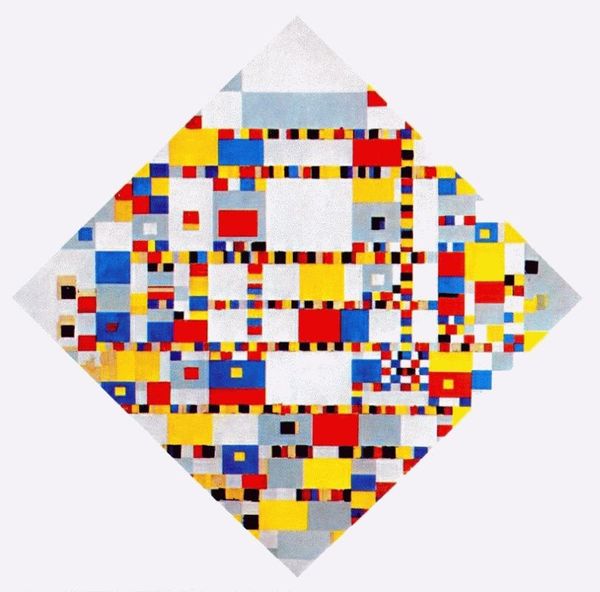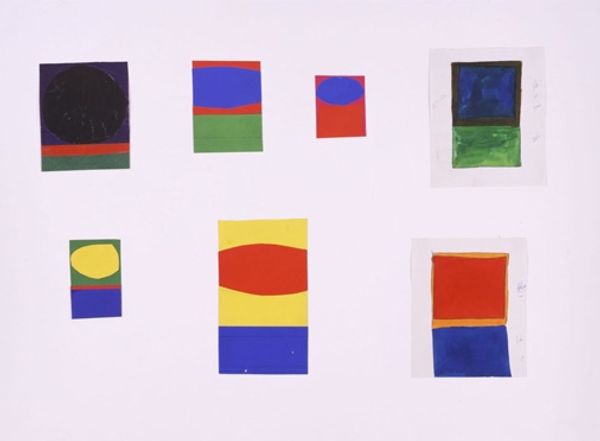
mixed-media, acrylic-paint
#
abstract-expressionism
#
mixed-media
#
non-objective-art
#
acrylic-paint
#
geometric
#
abstraction
#
mural
#
mixed media
#
modernism
Copyright: Alfred Jensen,Fair Use
Editor: This is "The Great Mystery II," created in 1960 by Alfred Jensen, employing mixed media. I’m really struck by the almost playful nature of the symbols, but also this sense of underlying order in the grid. How do you interpret this work? Curator: It's a fascinating piece! To me, the “mystery” isn’t just a conceptual one. Jensen was deeply invested in exploring systems of knowledge – mathematics, Mayan calendars, I Ching. It becomes clear when situating this work within his broader artistic practice of grappling with structures, that he sees such attempts at order as a way to deal with a colonial past. Does it challenge established hierarchies in your view? Editor: That's an interesting angle. It definitely disrupts the idea of a single, dominant perspective by combining diverse symbol sets. So is it pushing against established power structures and towards knowledge pluralism? Curator: Precisely! Think about it: He is appropriating systems of power while simultaneously divesting their significance through abstraction and aesthetic presentation, turning them into objects of art, not systems of knowledge or rigid hierarchies. The playful and intentionally naïve texture created through paint could itself be a decolonizing statement! Do you find there is something deeply rebellious about its naive presentation? Editor: Yes, I see what you mean. The textured surface and simplified symbols almost undermine the seriousness that one might expect from these systems of knowledge. I never would have thought about its decolonizing undertones without our discussion. Curator: It's about decentering Western modes of thinking. Through these non-hierarchical visualisations, Jensen implies we need to always challenge existing powers. I'm glad this conversation opened a new avenue into how we might interpret such work. Editor: Absolutely! I now see it's about more than just playful symbols. There’s a deeper, more critical dialogue happening here about knowledge and power.
Comments
No comments
Be the first to comment and join the conversation on the ultimate creative platform.
